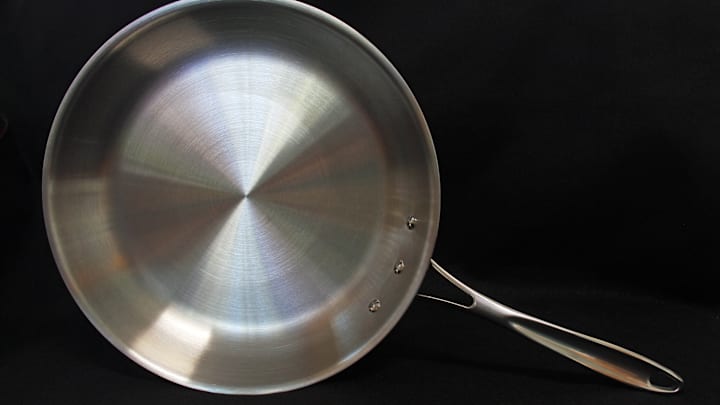While some may find charm in rusted-out iron or steel material—think a beloved old bicycle or decorative railing—most find it to be an insidious sign of damage and instability. You probably don’t want to actually be riding that antique bike; nor do people find rusted-out used cars particularly appealing.
Items made from stainless steel, however, appear all but immune to the consequences of rust. So what’s the secret?
Rust and Stainless Steel
Rust is the result of iron reacting with oxygen in air or water to form iron oxide. The corrosive process, known as oxidation, weakens the underlying material. But stainless steel contains an additional element that interrupts this process.
Regular steel is an alloy made mostly of iron and carbon. The key variable of stainless steel is chromium, which usually makes up 10.5 percent or more of the alloy. (The presence of chromium at that minimum actually defines whether material is considered stainless steel.) Chromium’s effect on iron and steel had been observed for decades, but it wasn’t put to practical use until 1913, when a metallurgist named Harry Brearley was looking for ways to prevent corrosion in gun barrels. One alloy made partially of chromium appeared resistant to all kinds of corrosion, and he quickly saw how it could be used outside of firearms. He applied his discovery to kitchenware and pushed to get his “rustless steel” out in the cutlery market. Other household goods followed.
What Brearley and others observed was that chromium essentially intercepts oxygen. Instead of oxidizing the iron, the oxygen interacts with the chromium to create chromium oxide on the surface. The chromium oxide acts as a protective force field of sorts, blocking oxygen from reaching the iron. If the layer is damaged, it can “heal” itself, preserving the material. (In addition to chromium and carbon, stainless steel typically contains silicon, manganese, nickel, and molybdenum.)
Because the protective layer of stainless steel is food-safe, stands up to acidic ingredients, and has a nonporous surface, it’s ideal for food preparation—which explains why so many mixing bowls, pans, and other cookware are made from it.
But one shouldn’t confuse rust-resistant with rust-proof. In certain cases, stainless steel can develop rust. If the chromium content is low, or if the material is exposed to chlorine or saltwater, the alloy can weaken. Consistent mechanical damage to the surface, like scratching it with a utensil, can also harm the protective layer.

Is Rust Harmful?
Rust isn’t inherently harmful to humans. If rust touches skin, it might leave a reddish-orange stain that can be removed with soap and water. Some people may associate rusty objects with tetanus, an infection caused by the Clostridium tetani bacterium. But C. tetani is usually found in soil. While rust is a sign that metal may have been exposed to the elements, it’s not rust itself that carries the pathogen.
Ingesting rust from cookware is also unlikely to hurt you, though the United States Department of Agriculture advises against using rusted utensils or pans.
Stainless Steel Cars
Given the resilience of stainless steel, it’s worth wondering why we don’t see more cars made of the material. Wouldn’t that result in less rust, particularly in colder climates that see a lot of snow and corrosive road salt? Why isn’t every truck a Cybertruck, which has a stainless steel body, or a DeLorean?
Like most manufacturing decisions, it comes down to cost. Stainless steel is more expensive as well as more difficult to weld. And even if it were affordable and malleable, it would still be slightly heavier than conventional steel, leading to vehicles with lower gas mileage.
Get Answers to More Big Questions:
